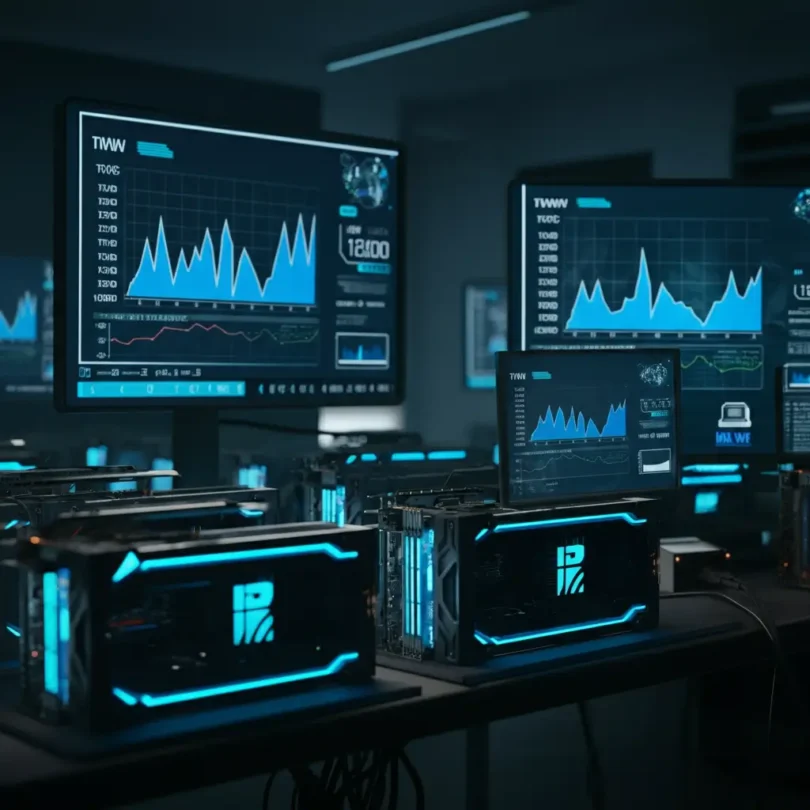The rise of Bitcoin and other cryptocurrencies has been nothing short of remarkable. At the core of this revolution lies Bitcoin mining, a process vital for maintaining decentralization and verifying transactions. For many miners, GPUs (Graphics Processing Units) remain a pivotal tool in their quest for digital gold.
But how does GPU mining work? And how can you select the right GPU to make Bitcoin mining efficient and profitable for your setup? This comprehensive guide dives deep into the world of Bitcoin Mining GPUs, offering expert advice, recommendations, and cutting-edge strategies to optimize your mining process.
What is Bitcoin Mining, and Why Are GPUs Important?
Bitcoin mining involves solving complex mathematical problems (proof-of-work) to validate transactions and add blocks to the blockchain. These calculations require high levels of processing power, and that’s where GPUs shine.
Initially, CPUs were used for mining, but as the network grew, they became less efficient for mining Bitcoin profitably. GPUs, designed for parallel processing, can handle these computations much faster, making them ideal for tackling mining algorithms.
Crypto enthusiasts and miners continue to favor GPUs because they offer flexibility, allowing mining not only of Bitcoin but also alternative cryptocurrencies.
What to Look for in a Bitcoin Mining GPU
When selecting a GPU for Bitcoin mining, there are several key factors to consider to ensure you get the best performance while staying energy efficient.
1. Hash Rate
The hash rate is the speed at which a GPU can solve cryptographic puzzles. Measured in MH/s (megahashes per second), a higher hash rate means better mining performance. For example:
- NVIDIA GeForce RTX 3090 offers one of the highest hash rates on the market, but it comes with a hefty price tag.
- AMD Radeon RX 6800 XT provides a competitive hash rate with a slightly more budget-friendly cost.
2. Power Consumption
Mining takes a lot of energy, so balancing your GPU’s power draw with its mining output is crucial for profitability. It’s not only about performance but also cost-efficiency in energy use. High-end GPUs might deliver staggering hash rates but could offset profits with their energy consumption.
3. Memory
For certain mining algorithms (e.g., Ethereum’s Ethash), GPU memory plays a key role. Ensure that your GPU has at least 6GB of VRAM for smooth processing. Models like the NVIDIA GeForce RTX 3080 or AMD Radeon RX 5700 XT are good examples of GPUs with excellent memory capacity.
4. Cooling
Overheating is a major concern during extended mining sessions. GPUs generate significant heat, so look for models with robust cooling systems. Some mining enthusiasts also invest in external cooling setups to enhance the lifespan of their GPUs. According to hardware expert Jane Smith, “Don’t underestimate the importance of cooling when overclocking your GPU for mining.”
Top GPU Recommendations for Bitcoin Mining
Choosing the right GPU involves balancing performance, price, and efficiency. Below are some of the top GPUs recommended for Bitcoin and cryptocurrency mining.
1. NVIDIA GeForce RTX 3090
- Pros: High hash rate (121 MH/s), powerful performance, 24GB GDDR6X memory.
- Cons: High energy consumption and a premium price tag.
2. AMD Radeon RX 6800 XT
- Pros: Excellent hash rate (64 MH/s), lower power draw than its NVIDIA counterpart.
- Cons: Slightly less powerful for certain mining algorithms.
3. NVIDIA GeForce RTX 3060 Ti
- Pros: Affordable pricing, efficient power usage, decent hash rate for its value.
- Cons: Lower mining performance compared to higher-end models.
AMD vs. NVIDIA
When debating AMD versus NVIDIA for mining, NVIDIA often leads for raw power and hash rates, while AMD GPUs provide better value and efficiency for budget-conscious miners.
Setting Up Your GPU for Mining
Getting your GPU ready for mining might seem complex, but with the right guidance, it’s manageable.
Step 1: Hardware Installation
- Install the GPU into your system and ensure the motherboard and power supply are compatible with the GPU’s requirements.
- For mining farms with multiple GPUs, consider a mining rig frame for better airflow and organization.
Step 2: Software Setup
- Download mining-specific software like NiceHash or CGMiner.
- Configure the software based on your chosen cryptocurrency mining algorithm.
Step 3: Join a Mining Pool
Mining Bitcoin is highly competitive. By joining a mining pool, you can combine resources with other miners, improving your chances of earning steady payouts.
Optimizing GPU Performance for Bitcoin Mining
Once operational, you can further optimize your GPU to boost mining efficiency.
Overclocking
Overclocking increases GPU performance by adjusting clock speeds. Be cautious, though, as improper overclocking can lead to overheating or hardware damage.
Custom BIOS
Some advanced miners install a custom BIOS that fine-tunes GPU settings for maximum efficiency. It’s a risky move, so proceed carefully.
Monitoring and Maintenance
Use tools like MSI Afterburner or HWMonitor to check temperatures and ensure your GPU is running within safe limits. Regular cleaning and dust removal can also extend the life of your hardware.
The Future of Bitcoin Mining with GPUs
The rise of ASICs (Application-Specific Integrated Circuits) has changed the Bitcoin mining landscape, as these specialized devices outpace GPUs in terms of raw power and efficiency. However, GPUs still retain their value for mining alternative cryptocurrencies, such as Ethereum and Ravencoin.
According to Richard Roe, a blockchain analyst, “While ASICs dominate Bitcoin mining, GPUs still offer opportunities with alternative cryptocurrencies.”
For casual miners or those unable to invest in ASICs, GPUs remain a viable option for participating in the crypto ecosystem.
Unlock the Potential of GPU Mining
Bitcoin mining with GPUs combines power, efficiency, and flexibility, making it a popular choice for crypto enthusiasts and tech investors alike. By carefully selecting powerful GPUs, optimizing their performance, and staying informed on industry trends, you can mine efficiently and profitably.
If you’re just starting or looking to scale, take inspiration from small-scale success stories like the mining operation in Ohio, which elevated profits by upgrading to modern GPUs and improving cooling systems.
Remember, success in crypto mining hinges on making savvy decisions about both hardware and strategy.
Are you ready to start mining smarter? Browse our full guide for more insights and detailed examples!







